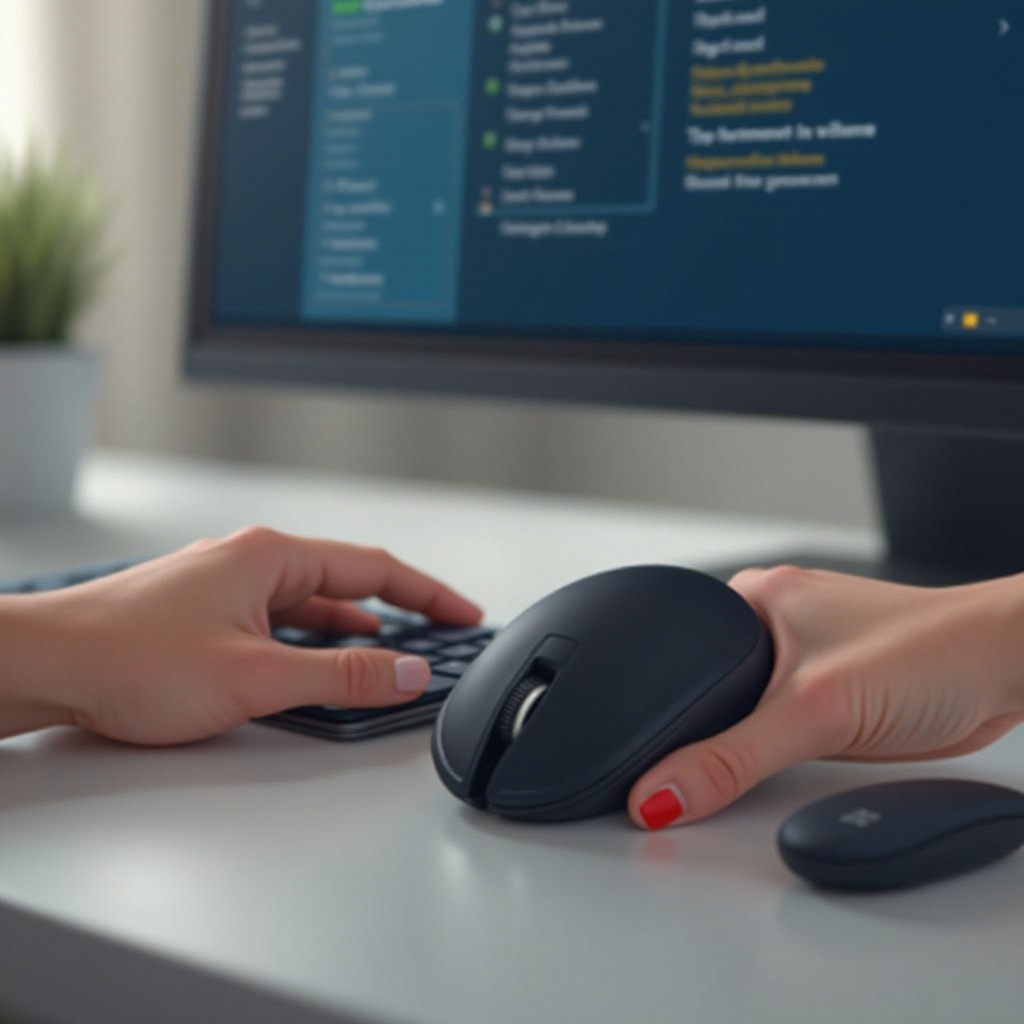
Introduction
When your mouse suddenly stops working, it can be incredibly frustrating. A functioning mouse is central to navigating our devices for work, education, or leisure. The issue could range from minor hardware glitches to more complex software conflicts. Understanding the root of the problem is essential in getting your mouse back on track and avoiding future disruptions. This article provides effective troubleshooting and preventative solutions to ensure your mouse functions smoothly.

Identifying the Problem
A precise diagnosis is critical before delving into solutions. Start by observing if your cursor responds or behaves erratically. Document any recent changes that might have caused the issue. It’s important to check if the problem persists across different devices or ports. This differentiation helps in determining whether the issue is device-specific or relates to your computer system. Discerning whether the problem is hardware or software-based is key to applying the correct solution.

Common Physical and Hardware Issues
Physical and hardware faults are common reasons for a mouse malfunction, and they are typically easy to address.
Checking Connections and Cables
- Inspect the mouse cable or the wireless USB receiver for any visible damage.
- Ensure the mouse is properly connected to the USB port. For wireless mice, confirm that the receiver is correctly positioned.
- Test different ports or connect your mouse to another computer to ensure the port in use isn’t faulty.
Inspecting Mouse and USB Ports
- Clean the USB ports and the mouse to remove any dust or debris that might interfere with connectivity.
- Check the USB ports for physical damage, such as bent pins or damaged sockets.
Evaluating Battery and Power Supply
- If you use a battery-operated mouse, consider replacing the batteries as they might lose charge over time.
- Confirm there is a consistent power supply by testing with a different cable or power adapter.
By addressing these straightforward issues, you may resolve the problem before looking into more complicated software troubleshooting.
Software and Driver Troubleshooting
If hardware solutions are ineffective, the next step is to explore software and driver-related issues.
Ensuring Drivers Are Up-to-Date
- Check the mouse manufacturer’s website for driver updates.
- Use your computer’s device manager to search for automatic driver updates.
Resolving Software Conflicts
- Review any recently installed software or updates that might conflict with your mouse.
- Uninstall any dubious programs or updates to see if they resolve the issue.
Rolling Back Recent System Updates
- If the problem manifested after a system update, consider rolling back to a previous restore point to undo any changes affecting mouse functionality.
- Search for optional updates in your operating system that pertain to peripherals.
Examining drivers and software conflicts may help resolve issues stemming from changes to your computer’s operating environment. Continue troubleshooting if you are using a wireless mouse and face continued issues.
Addressing Wireless Interference and Compatibility
Wireless mice offer convenience but may also experience signal interference or compatibility issues.
Managing Wireless Signal Interference
- Keep the receiver and the mouse within a short distance to ensure strong connectivity.
- Eliminate potential obstacles and avoid using the mouse near other wireless devices that may cause signal interference.
Ensuring Device Compatibility
- Confirm that your mouse is compatible with your operating system, especially after any OS updates.
- Refer to the manufacturer’s guidance for specific compatibility advice or modifications.
Configuring System Settings
- Alter system control panel settings, ensuring that the wireless mouse is set as the primary pointing device.
- Adjust power management settings to avoid the system turning off USB devices to save power.
Addressing compatibility and interference issues should maintain a stable connection. Should the problem persist, deploy advanced troubleshooting methods.

Advanced Troubleshooting Techniques
If basic solutions have not resolved the issue, advanced troubleshooting may be necessary.
Utilizing Device Manager Tools
- Access the device manager and remove the non-functioning mouse entry, enabling the system to reinstall the device on reboot.
BIOS Settings Check
- Enter BIOS settings during startup to ensure USB support is enabled.
Hardware Configuration Adjustments
- Use tools to evaluate PC hardware configuration. Consider upgrading components, especially if using an older mouse model with a newer system.
Advanced solutions offer a comprehensive approach for when basic troubleshooting fails. To avoid recurrence, consider preventive habits.
User Tips and Preventive Measures
Implementing preventative steps can help maintain your mouse’s reliability and avoid unexpected failures.
Regular Cleaning Routines
- Regularly clean your mouse and computer ports to prevent dust build-up.
Setting Up a Backup Mouse
- Keep a spare mouse handy to avoid delays in the event of failure.
Exploring Alternative Input Devices
- Consider alternative options like a trackpad or a graphics tablet if your mouse fails often.
Adopting these habits can significantly reduce the likelihood of experiencing mouse issues and ensure seamless device interaction.
Conclusion
A systematic approach to identifying and addressing potential hardware and software issues can restore your mouse’s functionality when it stops working suddenly. By understanding the problem, conducting thorough troubleshooting, and practicing preventive maintenance, you can ensure your mouse remains a reliable tool in your digital workspace.
Frequently Asked Questions
What should I do if my mouse stops working suddenly?
Begin by checking physical connections and power supply. Proceed to software troubleshooting and advanced techniques if basic solutions do not resolve the issue.
How can I tell if a mouse issue is hardware or software-related?
Test the mouse on multiple devices. If it works elsewhere, the problem is likely software-based. Conversely, if it doesn’t work, it’s likely hardware-related.
Are there alternative devices I should consider if my mouse fails frequently?
Yes, consider alternatives like trackpads or tablets. These devices offer varied functionality and can serve as backups when required.
